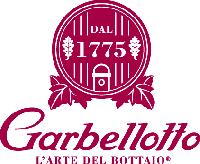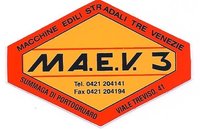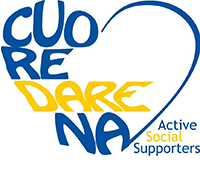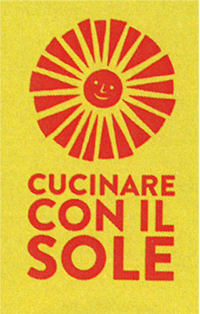Some of these countries had the most serious sovereign financing problems. The 1992 Maastricht Treaty obliges most EU member states to adopt the euro upon meeting certain monetary and budgetary convergence criteria, although not all participating states have done so. Denmark has negotiated exemptions,[18] while Sweden (which joined the EU in 1995, after the Maastricht Treaty was signed) turned down the euro in a 2003 non-binding referendum, and has circumvented the obligation to adopt the euro by not meeting the monetary and budgetary requirements. All nations that have joined the EU since 1993 have pledged to adopt the euro in due course.
- Supporters of the euro argued that a single European currency would boost trade by eliminating foreign exchange fluctuations and reducing prices.
- Many languages have different official spellings for the Euro, which also may or may not coincide with general use.
- In Community legislative acts the plural forms of euro and cent are spelled without the s, notwithstanding normal English usage.[31][32] Otherwise, normal English plurals are used,[33] with many local variations such as centime in France.
- After February 28, 2002, the euro became the sole currency of 12 EU member states, and their national currencies ceased to be legal tender.
These include central bank interest rates, sovereign debt levels, and the strength of the country’s economy. As of the first quarter of 2021, foreign governments held 2.4 trillion in euros compared to $6.9 trillion in U.S. dollar reserves. The International Monetary Fund (IMF) reports this quarterly in its COFER Table. The euro unites us – it’s used by about 350 million people across 20 European Union countries. Launched in 1999 as part of the EU’s integration as the European Economic and Monetary Union (EMU), the euro was strictly an electronic currency until the introduction of paper notes and coins denominated in euros in 2002. Our currency rankings show that the most popular Euro exchange rate is the EUR to USD rate.
Select a currency
The fiscal and monetary prerequisites for adopting the euro have also encouraged deeper political integration of member states. The central bank in Europe is called the European Central Bank (ECB). It is the second-most traded currency on the forex market, after the US Dollar, and also a major global reserve currency.
To future-proof our money, we are also preparing for a possible digital euro. It would be like cash, but digital – allowing you to make and receive payments online https://www.forexbox.info/ and offline across the euro area, without additional costs. These percentages show how much the exchange rate has fluctuated over the last 30 and 90-day periods.
Outside Europe, a number of special territories of EU members also use the euro as their currency. Additionally, over 200 million people worldwide use currencies pegged to the euro. Its value grew as more people used it through the years, and it reached its record high of $1.60 on April 22, 2008. Investors fled from dollar-denominated investments during the near-bankruptcy of investment bank Bear Stearns. The following EU member states are legally obligated to adopt the euro, though they do not have a deadline for adoption.
Preparing our euro for a digital future
The euro-to-dollar conversion details how many dollars the euro can buy at any given time, as measured by the current exchange rate. Forex traders on the foreign exchange market determine exchange rates, which change on a moment-by-moment basis, depending on how traders assess the risk vs. https://www.topforexnews.org/ the reward for holding the currency. Supporters of the euro argued that a single European currency would boost trade by eliminating foreign exchange fluctuations and reducing prices. Britain and Sweden delayed joining, though some businesses in Britain decided to accept payment in euros.
Other common names for the Euro include Yoyo (Irish English), Leru (Spanish), and Ege (Finnish). To ensure that you remain free to choose cash as a way to pay both now and in the future, the ECB and the central banks of the euro area are working to ensure that cash remains accessible to all. We will make sure it remains an accepted, competitive and reliable means of payment and a store of value. For example, the central bank of a country experiencing an economic slowdown can no longer cut interest rates, devaluing a national currency against that of its major European trading partners to stimulate exports. Since 2005, stamps issued by the Sovereign Military Order of Malta have been denominated in euros, although the Order’s official currency remains the Maltese scudo.[73] The Maltese scudo itself is pegged to the euro and is only recognised as legal tender within the Order. Our euro banknotes symbolise the integration, openness and cooperation between the people of Europe.
Other countries that adopted the currency include Slovakia (2009), Estonia (2011), Latvia (2014), Lithuania (2015), and Croatia (2023). (The euro is also the official currency in several areas outside the EU, including Andorra, Montenegro, Kosovo, and San Marino.) The 20 participating EU countries are known as the euro area, euroland, or the euro zone. The euro was initially proposed as the official currency of the entire European Union in order to unify the countries. All 28 member nations pledged to adopt the euro when they joined the EU, but they must meet budget and other criteria before they can officially switch currencies. As of 2021, they were Bulgaria, Croatia, Czechia, Hungary, Poland, Romania, and Sweden. The rates were determined by the Council of the European Union,[f] based on a recommendation from the European Commission based on the market rates on 31 December 1998.
In Community legislative acts the plural forms of euro and cent are spelled without the s, notwithstanding normal English usage.[31][32] Otherwise, normal English plurals are used,[33] with many local variations such as centime in France. As it became apparent the U.S.-based subprime mortgage crisis had spread globally, investors fled back to the relative safety of the dollar. Its value rose to $1.45 during the U.S. debt crisis in the summer of 2011.
They were set so that one European Currency Unit (ECU) would equal one euro. The European Currency Unit was an accounting unit used by the EU, based on the currencies of the member states; it was not a currency in its own right. They could not be set earlier, because the ECU depended on the closing exchange rate of the non-euro currencies (principally pound sterling) that day. Due to differences in national conventions for rounding and significant digits, all conversion between the national currencies had to be carried out using the process of triangulation via the euro. The definitive values of one euro in terms of the exchange rates at which the currency entered the euro are shown in the table. All circulating coins have a common side showing the denomination or value, and a map in the background.
Use as reserve currency
The euro is the sole legal tender in the EU member states that have adopted it, including Austria, Belgium, Cyprus, Estonia, Finland, France, Germany, Greece, Ireland, Italy, Latvia, Lithuania, Luxembourg, Malta, the Netherlands, Portugal, Slovakia, Slovenia, and Spain. These countries form the eurozone, a region where the euro serves as the common currency. Four small non-EU nations (Andorra, Vatican City, San Marino, and Monaco) also use the euro as their official currency and several countries have currencies pegged to the euro. In 2007 Slovenia became the first former communist country to adopt the euro. Having demonstrated fiscal stability since joining the EU in 2004, both Malta and the Greek Cypriot sector of Cyprus adopted the euro in 2008.
Due to the linguistic plurality in the European Union, the Latin alphabet version of euro is used (as opposed to the less common Greek or Cyrillic) and Arabic numerals (other text is used on national sides in national languages, but other text on the common side is avoided). For the denominations except the 1-, 2- and 5-cent coins, the map only showed the 15 member states of the union as of 2002. The coins also have a national side showing an image specifically chosen by the country that issued the coin. Euro coins from any member state may be freely used in any nation that has adopted the euro. The euro is the official currency of the European Union (EU), adopted by 19 of its 27 member nations. It is the world’s second most popular reserve currency after the U.S. dollar, and the second most traded.
The design elements and security features make our banknotes unique. Value of Obsolete National CurrenciesEuro bank notes and coins began circulating in 2002 with old notes and coins gradually being withdrawn from circulation. The precise dates that each old currency ceased being legal tender and their official fixed rates are shown in the table below. The most obvious benefit of adopting a single currency is to remove the cost of exchanging currency, theoretically allowing businesses https://www.currency-trading.org/ and individuals to consummate previously unprofitable trades. For consumers, banks in the eurozone must charge the same for intra-member cross-border transactions as purely domestic transactions for electronic payments (e.g., credit cards, debit cards and cash machine withdrawals). The euro is divided into 100 cents (also referred to as euro cents, especially when distinguishing them from other currencies, and referred to as such on the common side of all cent coins).
Create a chart for any currency pair in the world to see their currency history. These currency charts use live mid-market rates, are easy to use, and are very reliable. These are the lowest points the exchange rate has been at in the last 30 and 90-day periods. These are the highest points the exchange rate has been at in the last 30 and 90-day periods. For local phonetics, cent, use of plural and amount formatting (€6,00 or 6.00 €), see Language and the euro. Outside the eurozone, two EU member states have currencies that are pegged to the euro, which is a precondition to joining the eurozone.



















Leave a reply
You must be logged in to post a comment.